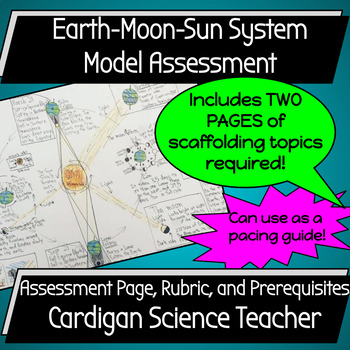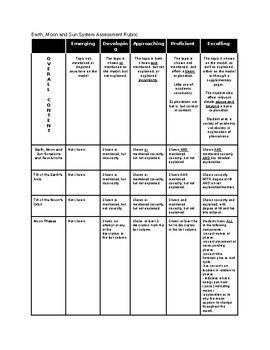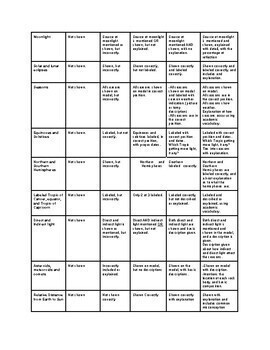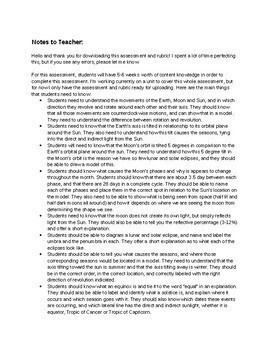Earth Moon and Sun System Assessment (with rubric and scaffolding information!)
- Word Document File
What educators are saying
Description
This product should be used as the final assessment for the NGSS Standard MS-ESS1-1 where students are asked to create a model of the Earth Moon and Sun system, and how all of the phenomena work together. This covers the ENTIRE standard.
This assessment includes:
- Rotation vs revolution of
- Eclipses
- Moon phases
- Tilts of axis's and orbits
- Seasons
- Equinoxes and Solstices
etc
I've included 2 pages of all the information that should be taught prior to this assessment as teachers notes at the end. Can be used as a content and pacing guide if you wanted!!
Included is a detailed rubric, and suggested weights for each section of the assessment, although that is totally up to the individual teacher, I just wanted to throw that in for convenience.
This is a new product, so please let me know if there are any mistakes, although I tried my best to ensure it was free of errors.
Although this was created as an assessment, this could easily become a project if you wanted to do it as such. It would also work very well as a collaborative assignment if you wanted to use butcher paper.
For this, I gave each student a 12x24in paper and it was individually completed during class (they were not allowed to take it home) for 4 days. Approximately 4 hours total. I did not require that they color the assignment.





